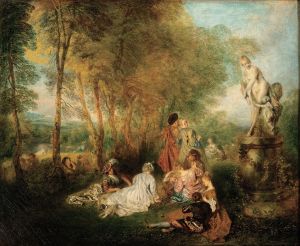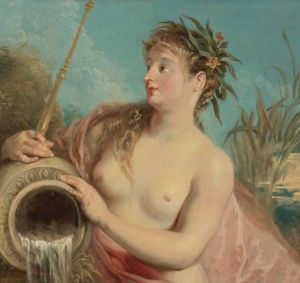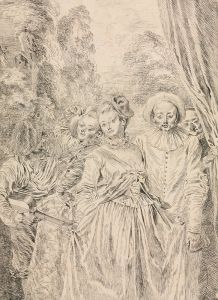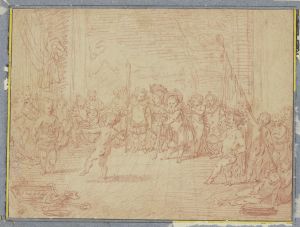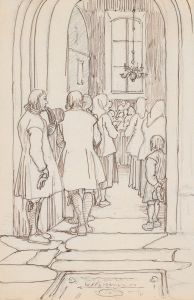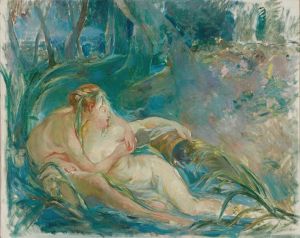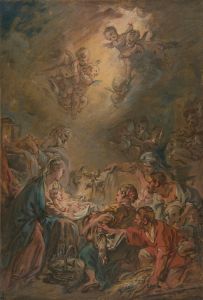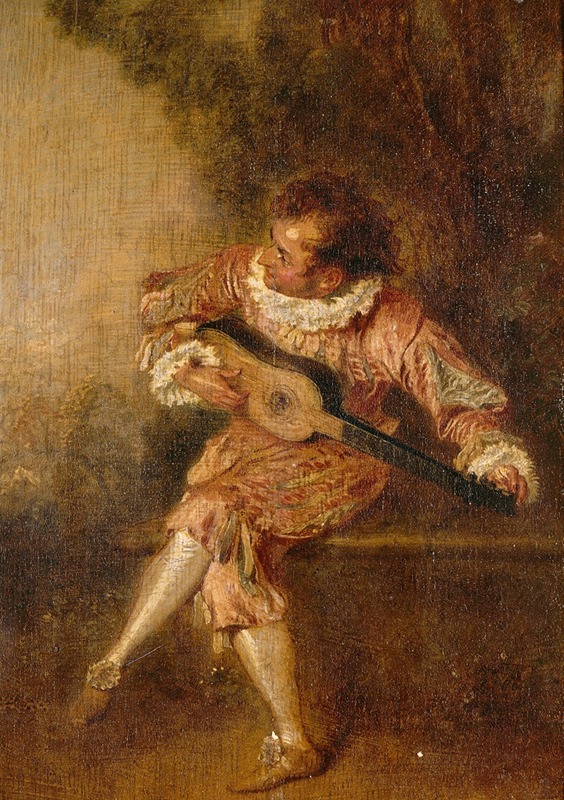
Le donneur de sérénades
A hand-painted replica of Jean-Antoine Watteau’s masterpiece Le donneur de sérénades, meticulously crafted by professional artists to capture the true essence of the original. Each piece is created with museum-quality canvas and rare mineral pigments, carefully painted by experienced artists with delicate brushstrokes and rich, layered colors to perfectly recreate the texture of the original artwork. Unlike machine-printed reproductions, this hand-painted version brings the painting to life, infused with the artist’s emotions and skill in every stroke. Whether for personal collection or home decoration, it instantly elevates the artistic atmosphere of any space.
Jean-Antoine Watteau's Le Donneur de sérénades (The Serenader) is a painting attributed to the French Rococo artist, renowned for his depictions of fêtes galantes—scenes of elegant outdoor entertainment. Watteau, active during the early 18th century, is celebrated for his delicate brushwork, subtle color palette, and ability to capture the nuances of human interaction and emotion.
Le Donneur de sérénades portrays a musician serenading a small group of figures in a pastoral setting. The central figure, likely the serenader, is depicted with a musical instrument, possibly a guitar or lute, a common motif in Watteau's works that emphasizes themes of music, love, and leisure. The surrounding figures, dressed in elegant and theatrical attire, suggest an atmosphere of refined sociability and romantic intrigue. The painting exemplifies Watteau's characteristic blending of reality and fantasy, as well as his ability to evoke a sense of intimacy and charm.
The exact date of the painting's creation is not definitively known, but it is generally associated with Watteau's mature period, during which he developed his signature style. The work reflects the influence of both the Italian commedia dell'arte and the French theatrical tradition, which were significant sources of inspiration for Watteau. The serene and idyllic setting, combined with the playful yet melancholic undertones, aligns with the Rococo aesthetic that dominated the early 18th century.
As with many of Watteau's works, the provenance of Le Donneur de sérénades is not entirely clear, and its current location is not definitively documented. Some scholars have debated the attribution of certain works to Watteau due to the lack of comprehensive records from his time. However, the painting is widely recognized as an example of his artistic legacy and his contribution to the Rococo movement.
Watteau's influence on subsequent generations of artists was profound, and his works, including Le Donneur de sérénades, continue to be celebrated for their poetic quality and innovative approach to composition. The painting remains an important example of Watteau's ability to capture the fleeting beauty of human interaction and the ephemeral pleasures of life.






